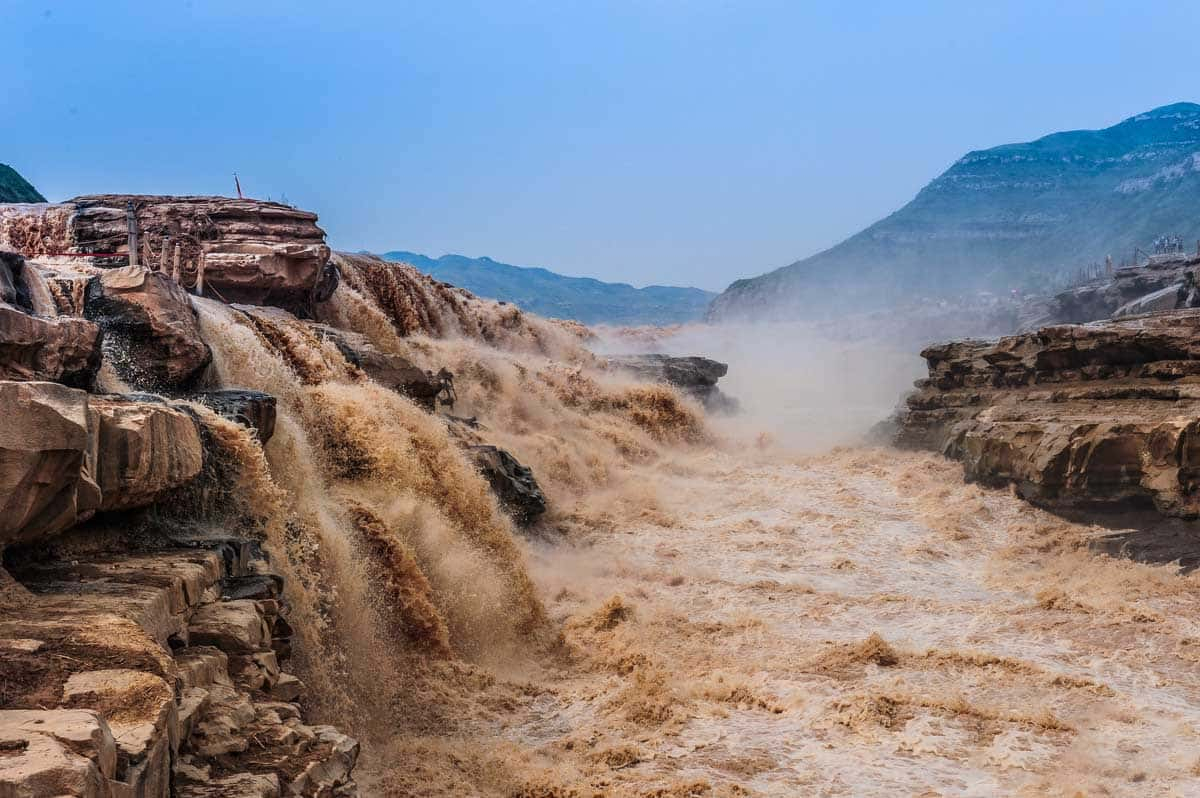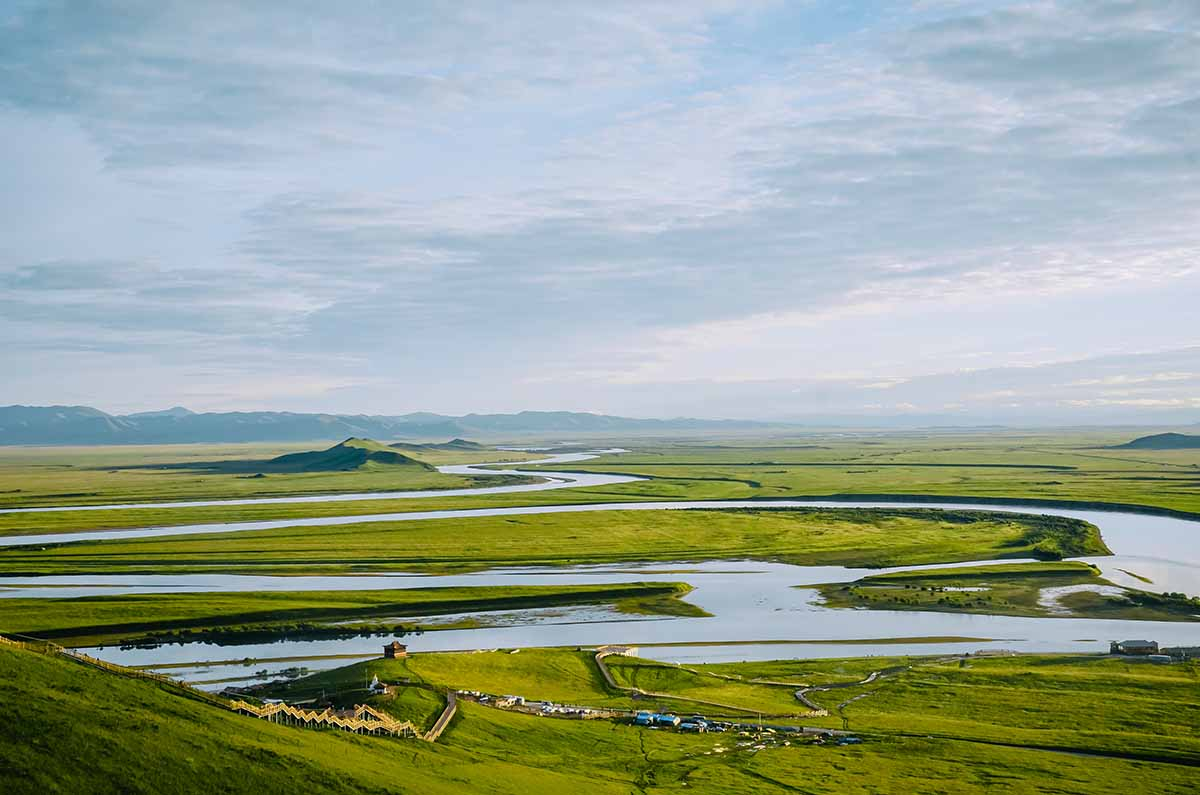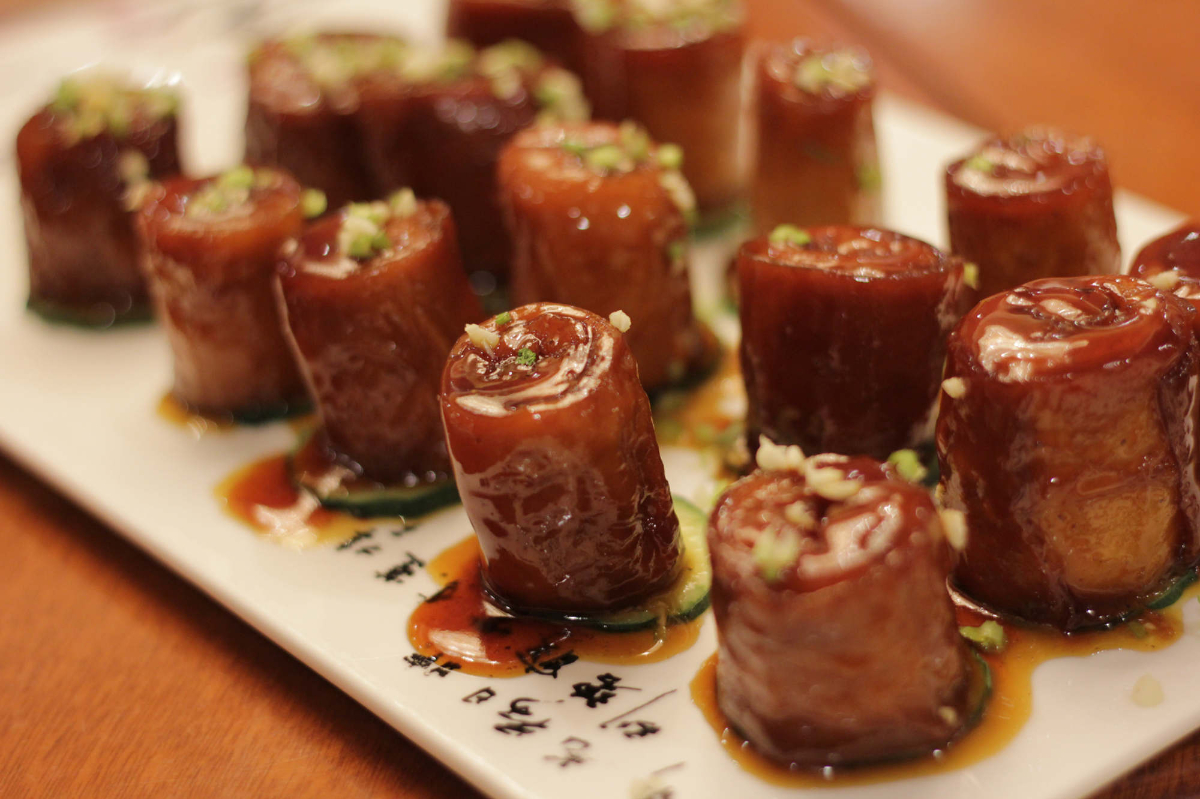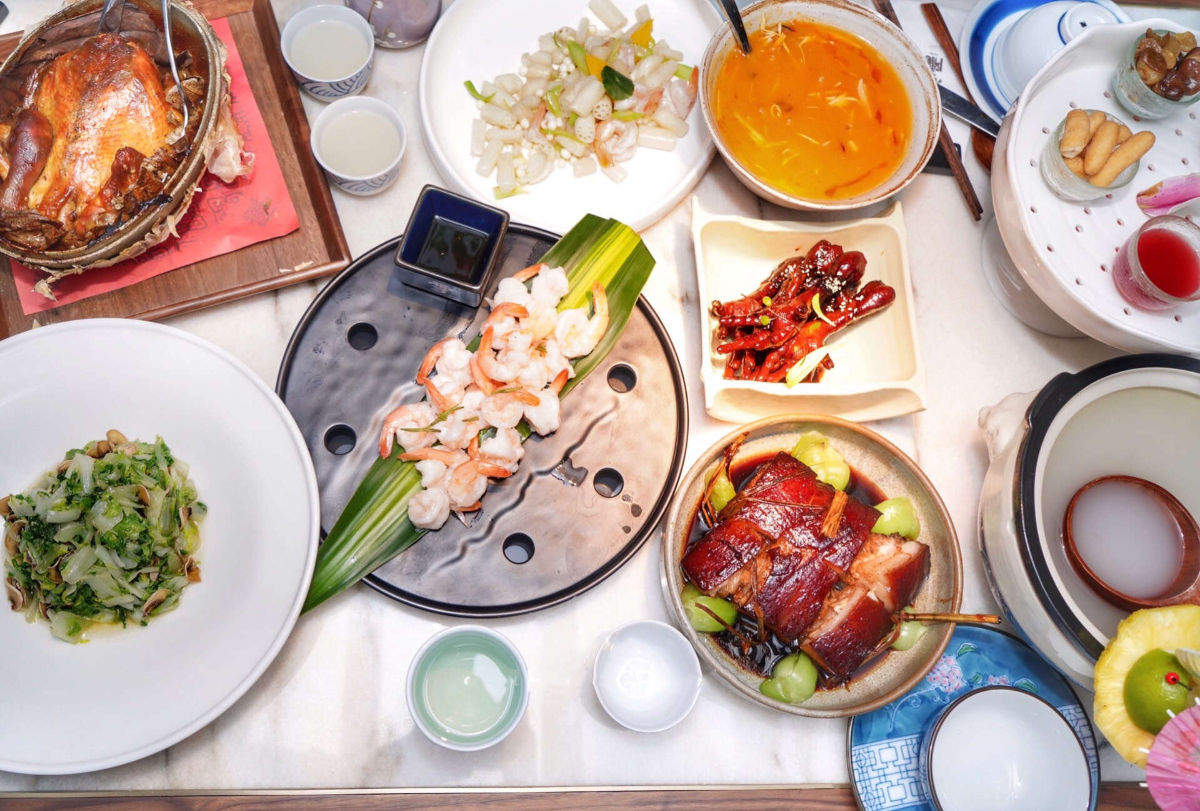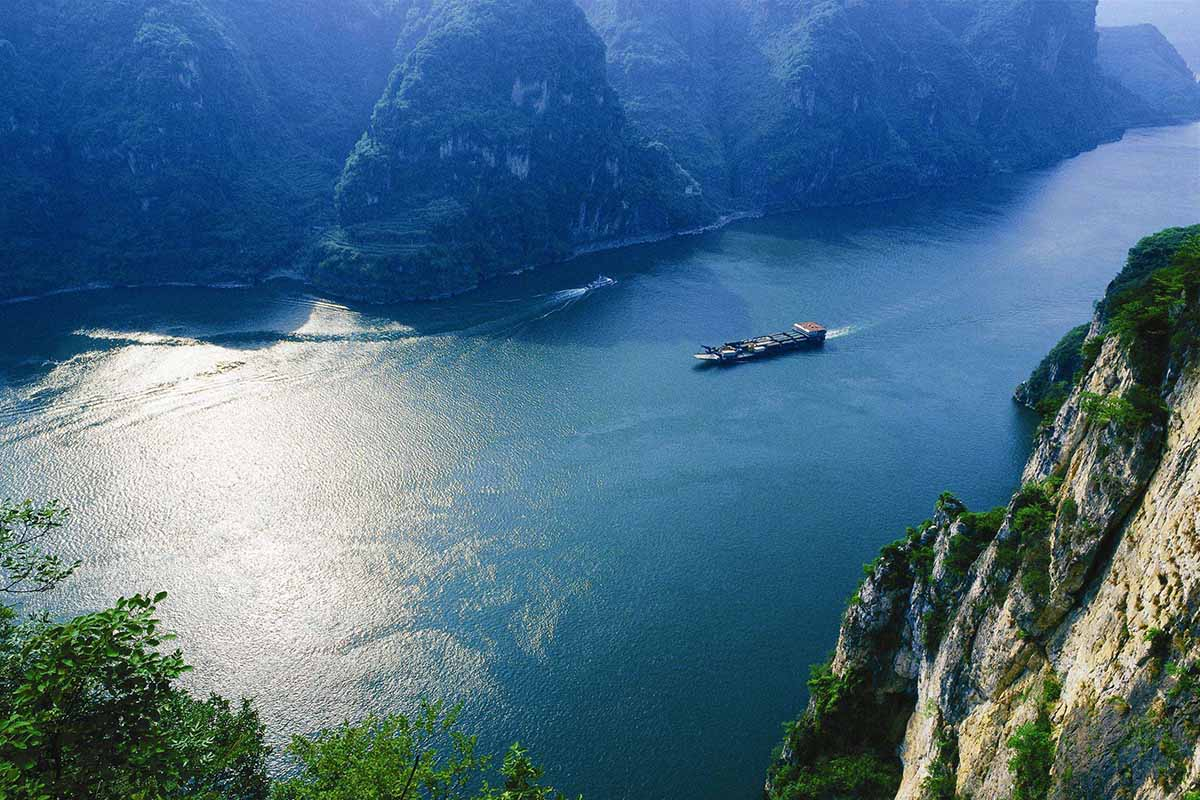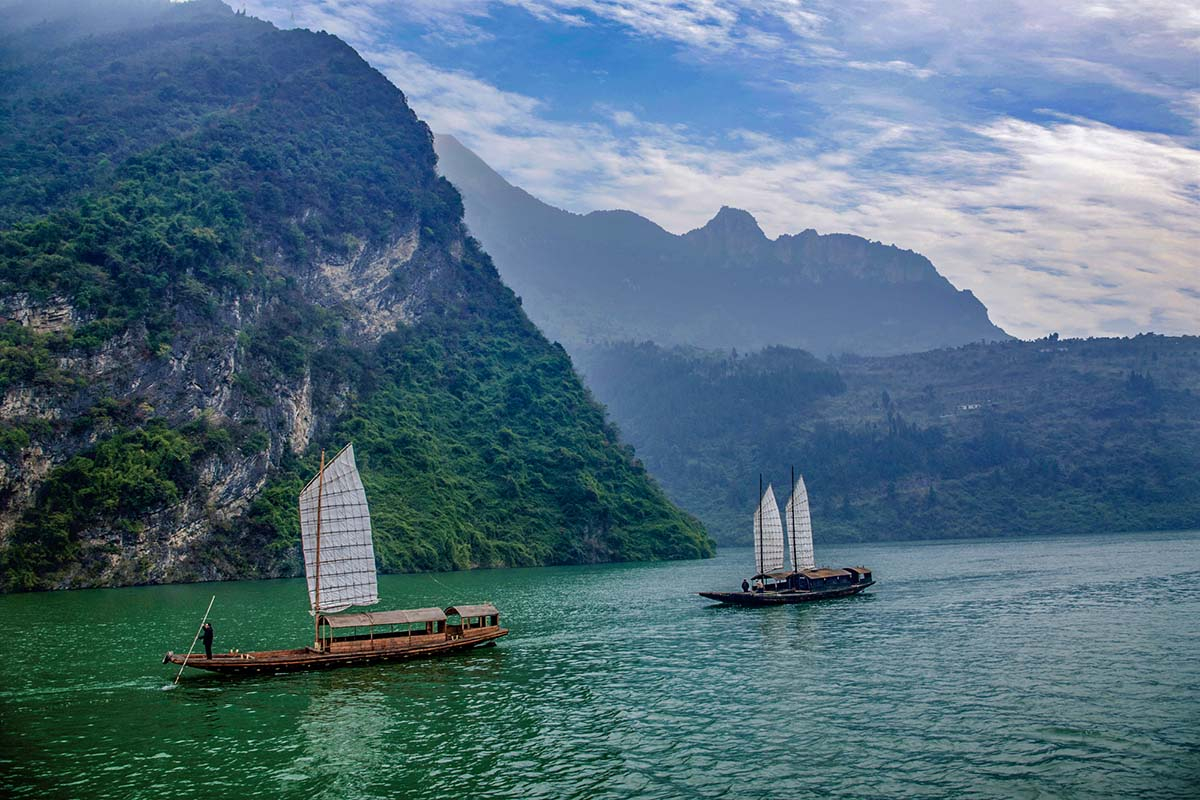Citiies and scenic spots along Yellow River
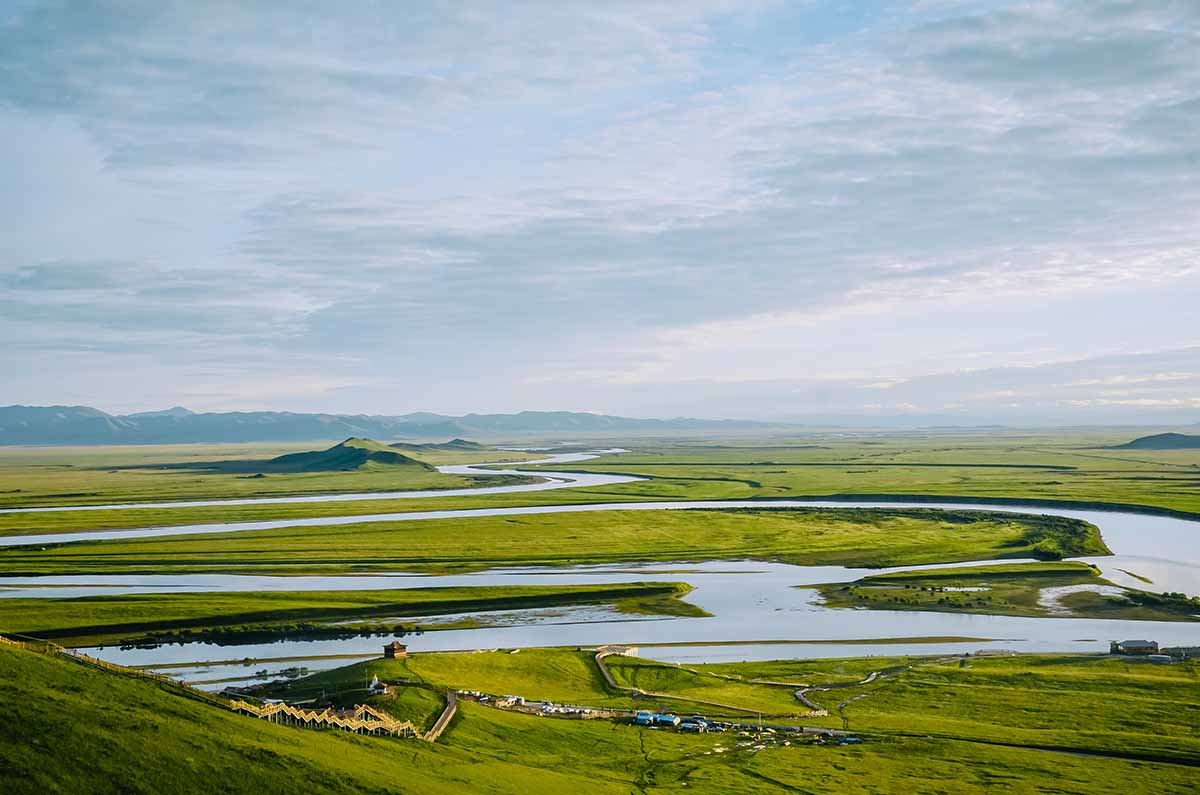
Known as the 'Mother River' of China, Yellow River is the second longest river in China, the main river in north China, and the cradle of Chinese civilization as the Nile is cradle of Egyptian civilization. It originates in on Tibet-Qinghai plateau — like the Yangtze, China's largest river, and the Mekong River — and gets nearly 45 percent of its water from glaciers and vast underground springs of the Tibetan Plateau. From Tibet-Qinghai it flows for 5,464 kilometers (about 3,400 miles) through Qinghai, Gansu, Ningxia, Inner Mongolia, the border of Shaanxi and Shanxi, Henan and Shandong before it empties into Bo Hai Gulf in the Yellow Sea.
As the cradle of Chinese civilization, the drainage area of the middle and lower reaches of the Yellow River saw the earliest development of Chinese science, technology and culture. Early in Prehistoric Times (1.7 million years ago - 21st century BC), our ancestors lived a collective life here and invented fire, hunting, fishing and farming. From the first dynasty of ancient China, this area dominated national politics, economy and culture for more than 3,000 years. The 'Four Inventions' of China: paper making, printing, compass and gunpowder, were born here, as is true of much brilliant classic literature. Ancient historical and cultural relics can still be found almost exclusively within this area.
● Citiies and scenic spots along Yellow River
Along the Yellow River are many branch rivers, lakes, waterfalls, gorges, and hydropower stations. They not only nourish the surrounding vast fertile fields but provide imposing scenery for visitors.
Qinghai Province
Qinghai Province is the source of the Yellow River, which is also the longest in this province, flowing for a total of 1,964 kilometers. As it has flowed through this part of the country, the river has created many spectacular gorges and many other places that are worth visiting. Exploring along the Qinghai section of the river, you can have a look at Qinghai's capital city, Xining. It boasts a lot of attractions, including Zhaling Lake, E'ling Lake, Longyang Gorge, Star Sea and Mt. Riyueshan.
Sichuan Province
Yellow River is the natural boundary of Sichuan Province and Gansu Province. On its west side side is Gansu while on the east side is Sichuan. As it flows through Gansu Province, it forms a giant 'S' shape that is clearly visible on most maps. This is just the famous sight “the First Bend of Yellow River'.
Gansu Province
The Yellow River flows through Lanzhou City, Gansu Province. The river itself and its many tributaries provide life-giving water to industrious people who live along its banks. Here, you can find many places of historical interest, including Gansu Provincial Museum, Bingling Thousand Buddha Caves and Fu Hsi Temple.
Ningxia Hui Autonomous Region
As the Yellow River flows through Ningxia Hui Autonomous Region; it contributes to a fertile land that is seen elsewhere only along the lower reaches of Yangtze River. The scenery along the river in this area is charming and varied, ranging from the desolate landscapes of northern region of China to the softer, more typical scenery of the southern region of the country.The most famous ones include Shapotou and Sand Lake.
Inner Mongolia
Stretching for 800 kilometers (about 497 miles) through this area, the Yellow River is the longest in Inner Mongolia. In this area, the river freezes during the winter, so visitors who come in spring when the ice starts to thaw, will see the sight of chunks of ice float downriver on their way to warmer water where they eventually melt.
Shaanxi Province
Known as the mother river of the Chinese nation, the Yellow River has nurtured Chinese civilization for many millennia. In historic Shaanxi Province, visitors can see attractions that demonstrate the important role the river has played in the development of Chinese culture in this area.In Yan'an you can appreciate the majesty of Hukou Waterfalls or may go to pay tribute to the tomb of Huangdi (Yellow Emperor), the ancestor of Chinese nation.
Shanxi Province
The tireless Yellow River has conquered mountains and plains, arriving in Shanxi Province with great vigor and then turning to the south, where it cuts the Loess Plateau like a mighty sword and creates a deep gorge. The Hukou Waterfalls is just situated between Jixian County of Shanxi and Xichuan County of Shaanxi. It's the first largest yellow waterfalls in the world.
Henan Province
In Henan Province, the Yellow River traverses the important cities of Luoyang, Zhengzhou and Kaifeng. With a very long history, Luoyang is renowned for its numerous historical relics. In the city, you can visit the famous Xiaolangdi Scenic Area, White Horse Temple and Sanmen Gorge. As the capital of Henan, Zhengzhou of course is your must-see city. There you can go to the Yellow River Scenic Area.
Henan Province
After visiting Luoyang and Zhengzhou, you can go on to visit Kaifeng, which is located on the lower reaches of the Yellow River. In Kaifeng, you can go on a visit to the Dragon Pavilion, Iron Pagoda and Xiangguo Temple.
Shandong Province
In Shandong Province, the Yellow River flows through the capital city Jinan and continues running towards the northeast. Finally, it reaches its destination - the Bohai Sea. It has become the main water resource for northwestern part of Shandong Province and some of the coastland.It is famed for lots of springs. The most famous one is the Baotu Spring.
